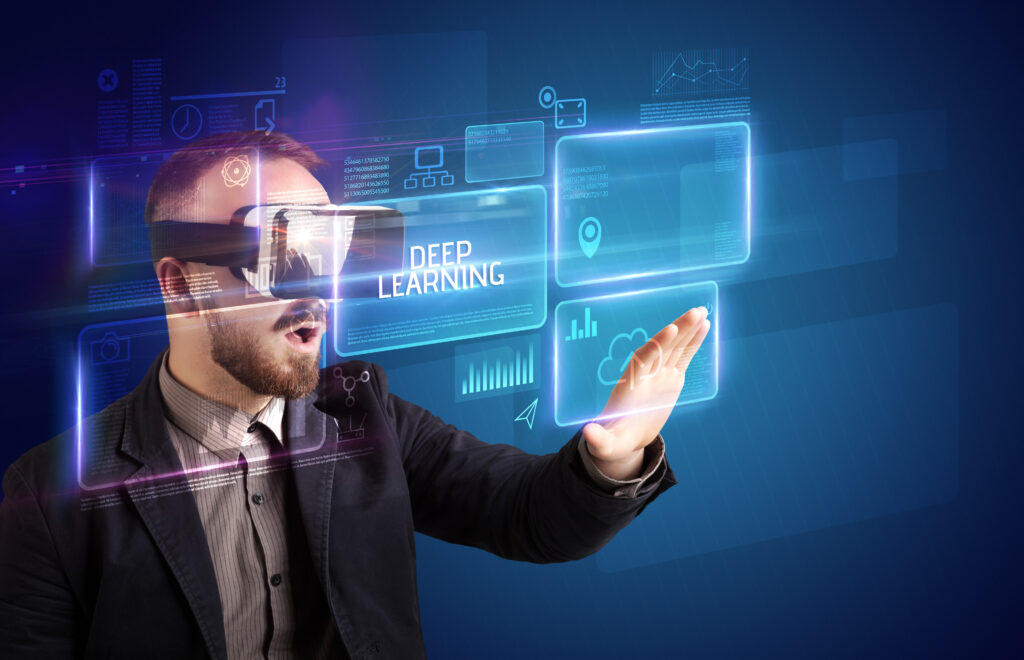As an ML professional, you’re likely familiar with the rapid advancements in deep learning over the past decade. However, you may be less familiar with some of the latest breakthroughs. Such as, enabling deep learning models to achieve unprecedented performance on complex cognitive tasks once thought exclusive to human intelligence. In this article, we provide an overview of some of the most exciting new techniques in deep learning. Lets also extract what it might mean for the future relationship between humans and artificial intelligence.
From algorithms that can reason and plan to neural networks that can imagine and create, gain insight into how researchers develop AI with more human-like capabilities. We discuss the implications of such advancements and explore outstanding challenges on the path toward artificial general intelligence. By the end, you will have a richer understanding of the current state-of-the-art deep learning and an appreciation for how researchers continue to close the gap between human and machine cognition.
Deep Learning Breakthroughs: AI Reaching New Frontiers
Advancing Computer Vision
Deep learning has enabled massive improvements in computer vision, allowing AI systems to analyze and understand digital images and videos. AI can detect and recognize objects, scenes, people, and actions with super-human accuracy. For example, AI has learned to detect diseases from medical scans, read text in images, drive vehicles by seeing the road, and more.
Natural Language Processing
Deep learning has revolutionized natural language processing (NLP), allowing AI to understand, generate and translate human languages. AI can now translate between hundreds of languages, answer questions, develop coherent paragraphs of text, analyze sentiment in social media posts, and more. NLP enables AI assistants like Siri, Alexa, and Cortana to have basic conversations.
Reinforcement Learning
Reinforcement learning allows AI systems to learn how to achieve complex objectives in uncertain, dynamic environments. DeepMind’s AlphaGo learned to beat the world’s best Go players through self-play. DeepMind’s AlphaStar learned to play StarCraft, a complex real-time strategy game. Reinforcement learning could enable AI to solve more complex, open-ended problems like controlling robots, optimizing logistical systems, or playing other strategy games.
Advancements in these and other areas enable AI to reach and surpass human-level performance on increased tasks. With continued progress, AI may achieve human-level intelligence in the coming decades, though many open questions remain about ensuring its safe and ethical development and use.
Bridging Human Cognition and Artificial Intelligence

Understanding Human Cognition
- To develop AI that matches human cognition, we must first understand how the human mind works. Human cognition emerges from the interplay of perception, learning, reasoning, problem-solving, decision-making, and language. Our brains have evolved to help us navigate complex social relationships and environments. AI needs to demonstrate a similar level of general, flexible intelligence.
Current Progress in Deep Learning
- Recent advances in deep learning have enabled AI systems to achieve human-level performance on specific, limited tasks, such as image recognition, game playing, and language understanding. However, these systems are narrow in scope and cannot easily generalize their knowledge to new domains. They lack the common-sense reasoning, causal understanding, social skills, and general problem-solving abilities humans possess.
The Path Forward
- Bridging human and AI cognition will require continuing progress in machine learning and breakthroughs in areas like reasoning, problem-solving, social skills, and common-sense knowledge. Researchers are exploring innovative techniques such as one-shot, unsupervised, transfer, and reinforcement learning to help AI systems develop more flexible, generalizable intelligence. Multi-disciplinary collaborations across neuroscience, psychology, linguistics, and robotics will be essential to better understanding and replicating human cognition.
While human-level AI may still be quite distant, deep learning has brought it closer to our grasp. With sustained research and computing advances, AI will get smarter, learning to think more like us and better understand what it means to be human. However, we must ensure that it develops in a way that is grounded and aligned with human values. Our future depends on building AI that augments and amplifies human capabilities rather than competing against them.
Fundamental Advances Bringing AI Closer to Human-Level Cognition
Improved Neural Networks
Artificial neural networks are algorithms loosely inspired by the human brain. They are at the core of deep learning and consist of interconnected nodes that process data and change their connections based on that data. Recently, researchers have developed new neural network architectures that more closely mimic the connectivity patterns of neurons in the human brain. For example, capsule networks enable neural networks to learn part-whole relationships crucial for complex visual tasks like object recognition.
Transfer Learning
Transfer learning is a technique where a neural network is first trained on a large dataset for a task like image classification. Then, the learned features are transferred to a new task with little data, such as medical image analysis. The intuition is that the network has learned useful features that apply broadly. Transfer learning has enabled recent AI systems to achieve human-level performance on complex tasks with limited data. For instance, OpenAI’s CLIP model was first trained on 400 million image-text pairs from the internet and then fine-tuned for downstream tasks.
Generative Models
Generative models are unsupervised algorithms that can create new examples in a domain, such as images, videos, speech, and text. Recent generative models like GANs and variational autoencoders (VAEs) can generate highly realistic images, videos, speech, and text. They work by modeling the data distribution in a domain and then sampling from that distribution. Generative models are a step towards human-level intelligence because they can flexibly imagine and create new examples rather than just classify or predict based on past examples.
With rapid progress in neural networks, transfer learning, and generative models, AI is achieving human-level performance on increasingly complex tasks. While human-level AI remains elusive, its prospects are more promising than ever before. AI has a long way to go to match humans’ general, adaptable intelligence, but fundamental advances in deep learning are bringing it closer.
The Exciting Future of Human and AI Collaboration
1. Enhanced Problem-Solving
As deep learning algorithms become more sophisticated, they will be able to tackle increasingly complex problems in collaboration with humans. Deep learning models can identify patterns in massive datasets that humans alone may miss, enabling breakthroughs that integrate machine learning with human judgment and creativity.
2. Personalized Education
Advancements in deep learning will transform how we learn and educate. AI systems can adapt educational content to individual learners’ needs, skills, interests, and learning styles. They can provide personalized guidance and support for students, helping them learn independently. Deep learning will enable virtual tutors and mentors and highly engaging, immersive learning experiences.
3. Improved Healthcare
Deep learning has the potential to improve healthcare and quality of life radically. AI systems can help diagnose diseases, discover new treatments, gain insights into human biology, and predict outcomes. They can analyze vast amounts of data to detect health risks and personalize treatment plans. AI and humans working together will enhance care, reduce costs, and save lives through the early detection of diseases.
4. A More Productive Future
When combined with human judgment and oversight, deep learning will drive tremendous gains in productivity and economic growth. AI can take over routine tasks, freeing humans to focus on creative, interpersonal work. Deep learning will continue to disrupt and transform industries by automating processes and enhancing services. Overall, the future of human and AI collaboration is an exciting prospect that will significantly benefit both individuals and society. With prudent development and oversight, deep learning can achieve its full potential as a tool for empowering humans.
Deep Learning Breakthroughs FAQs: Understanding the Fusion of Human Creativity and AI
What are the cutting-edge advancements in deep learning?
- Deep learning algorithms have achieved human-level performance on complex cognitive tasks such as object recognition, speech recognition, machine translation, and strategy games. Recent breakthroughs in unsupervised learning and generative models allow AI systems to learn directly from raw data without explicit programming. These algorithms can generate highly realistic synthetic images, videos, speech, and text.
How do these advancements bridge human and AI cognition?
- Biological neural networks inspire deep learning models in the human brain. As algorithms become more sophisticated, they develop cognitive functions analogous to human perception, learning, reasoning, and creativity. Systems can now generate artistic images, compose music, write stories, and solve complex strategic problems with superhuman skill. While still narrow in scope, these demonstrations provide a glimpse into how AI may eventually match and even surpass human-level intelligence.
What are the implications and concerns?
- The rapid progress in AI raises hopes for improved productivity and quality of life, along with fears about potential negative consequences. There are concerns about job disruption, data privacy, and bias in AI systems. More advanced AI could potentially be misused for malicious purposes like cybercrime, surveillance, and weaponry. However, researchers are working to address these concerns through AI safety practices, ethics guidelines, and policy recommendations to help ensure the responsible development of advanced AI.
What does the future hold?
- In the coming decades, continued progress in deep learning and related technologies will drive further breakthroughs in artificial general intelligence. AI systems may reach and eventually far surpass human-level intelligence, a scenario known as superintelligence. The advent of superintelligent machines could help solve many of humanity’s greatest challenges but also pose existential risks if not correctly aligned with human values and priorities. Close collaboration between researchers, policymakers, and the public will be needed to help navigate the opportunities and uncertainties of increasingly advanced AI.
To Summarize
Through exploring the immense progress made in deep learning and artificial intelligence, it’s clear these advancements have the potential to revolutionize many industries. However, we as a society must ensure this technology is developed and used responsibly to augment human capabilities rather than replace them. By building strong partnerships between technologists and domain experts across different fields, we can direct research in ways that will maximize benefit and minimize harm. If we approach these powerful innovations with wisdom and care, AI and human intelligence can work together to unlock previously impossible solutions. Though there are valid concerns, the tremendous good AI can enable also inspires hope. We have an opportunity to shape the future; let us proceed thoughtfully.
More Stories
Sisense Intelligence: Transforming Data into Action with Generative AI
Sisense Intelligence offers a seamless experience, allowing you to interact with data using natural language and generate insightful dashboards without the need for complex coding.
TikTok Empowers Users with AI-Driven Content Control Tools
TikTok is advancing digital content with AI-driven tools that give you more control over your viewing experience. On June 3,...
Perplexity Labs: Transforming Prompts into Dynamic Reports and Dashboards
As a professional in today’s fast-changing digital world, you need tools that go beyond traditional limitations. That’s where Perplexity Labs comes in—an innovative feature from Perplexity AI, available only to Pro subscribers. It turns your creative prompts into detailed reports, interactive dashboards, spreadsheets, and even full web applications.
Google’s AI Edge App Brings Offline Intelligence to Your Phone
The new AI Edge App from Google reshapes mobile technology as it brings artificial intelligence directly to your smartphone.
Salesforce Accelerates AI-Driven Cloud Data Integration with Informatica Acquisition
Salesforce acquires Informatica in a deal valued at around $8 billion as part of a bold move to redefine its approach to cloud data management.
Samsung’s AI Power Play: Perplexity Partnership Signals Shift from Google
Samsung is poised to redefine AI in its Galaxy smartphones through a bold strategic move. It has partnered with Perplexity AI, an innovative U.S.-based startup. This signals a possible shift away from Google’s AI ecosystem. As a result, Samsung may integrate Perplexity’s advanced assistant into its devices.


